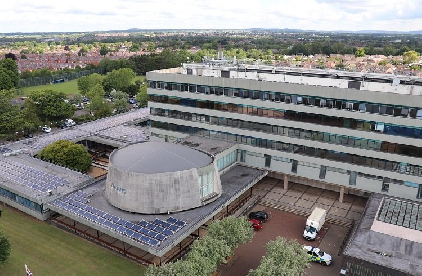
Shropshire Council is working with supported living providers to avoid unaccompanied asylum seeking children having to go into costly children’s home placements, a new report says.
The authority’s cabinet will next week receive an update on work being carried out in preparation for an expected increase in unaccompanied children and young people arriving in the county over the coming months.
There are currently 20 unaccompanied children living in the county from countries including Syria, Afghanistan, Iran and Iraq, as well as 37 young people aged 18 to 25.
A report to cabinet says the figure “changes week by week and will continue to do so as new children arrive and some reach 18”.
The council receives government funding to support children taken in, intended to cover the costs of their placements and education, with extra money for those accepted under the National Transfer Scheme (NTS).
But the report, by Tanya Miles, executive director of adult social care and housing, says this is not enough in cases where children need to be placed in a residential home.
Given the current crisis in Afghanistan, it is expected that Shropshire Council will be home to up to 40 children by the end of this year.
The figure represents 0.07 per cent of Shropshire’s child population – the maximum that local authorities are asked to take in.
The report says: “As we accept more unaccompanied asylum seeking children (UASC) as a result of increasing numbers, there is an increased likelihood that Shropshire Council will have a UASC in need of a residential placement.
“This is due to national placement sufficiency issues.
“We know that while a UASC is placed in a fostering or semi-independent placement the weekly funding rate of £798 (£114 per night) is just about sufficient to cover the costs of supporting that child, whereas if a UASC does require a residential placement the Home Office funding falls significantly short of meeting our costs.
“We are working with supported living providers to try and ensure this is not required.
“However, if it is then it will be at significant cost to the local authority.”
The report goes on to say that funding reduces once a young person reaches the age of 18, when they are normally granted leave to remain and can access employment and benefits.
However Ms Miles adds: “There are occasions where there is a lengthy wait in relation to this.”
The report also sets out some of the measures the council has in place to ensure children and young people receive the best possible support.
It says: “There are particular skills and knowledge that social workers have to acquire to support these children and young people.
“We support dedicated social workers and personal advisors to undertake this work, the legislation is complex and they require a broad knowledge and understanding of culture, religion, trauma as well as working with interpreters, legal advisors and a range of other professionals.
“They also have to be alert to a specific range of risks to these young people, as they are vulnerable and at risk of going missing, being trafficked or pulled into modern slavery.
“We are one of only a few local authorities that has employed a UASC Champion to support our young people.”
The report will be discussed by cabinet at a meeting next Wednesday.
Speaking at a meeting last month, Councillor Kirstie Hurst-Knight, portfolio holder for children’s services, said: “We have been, and will continue to be, committed to supporting unaccompanied asylum seeking children.”


